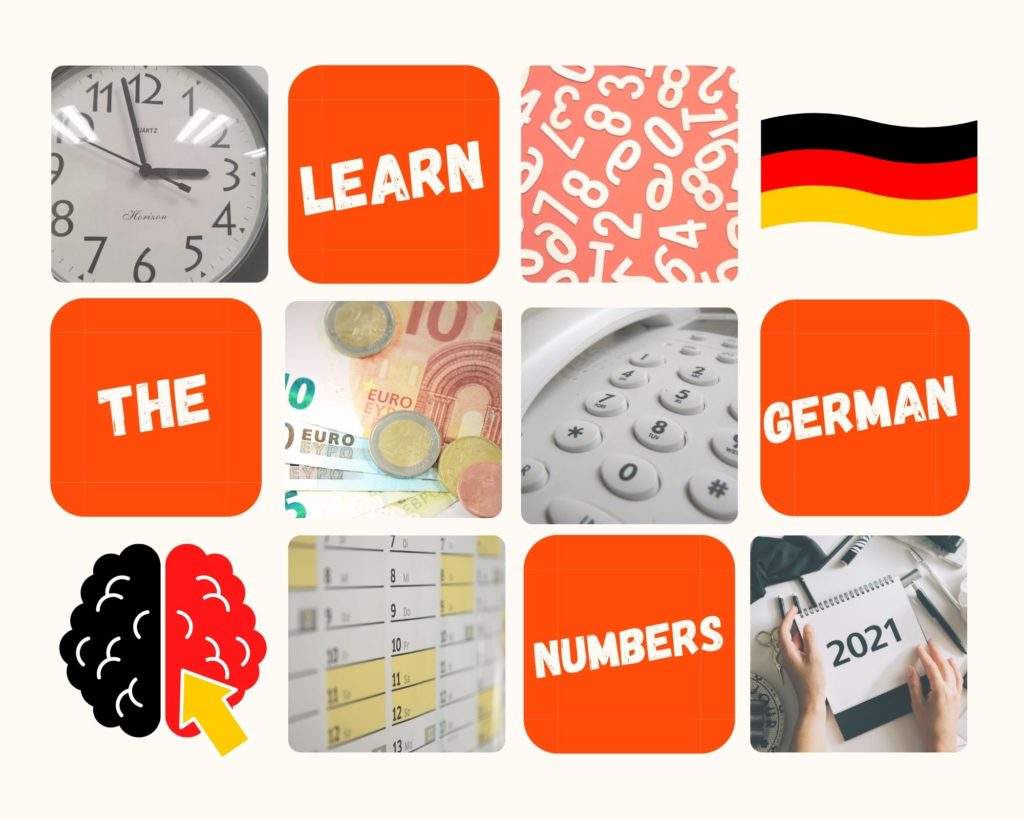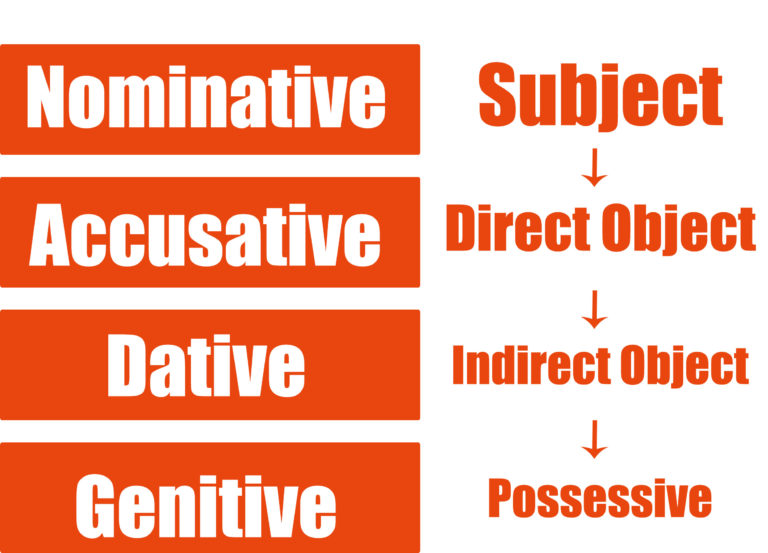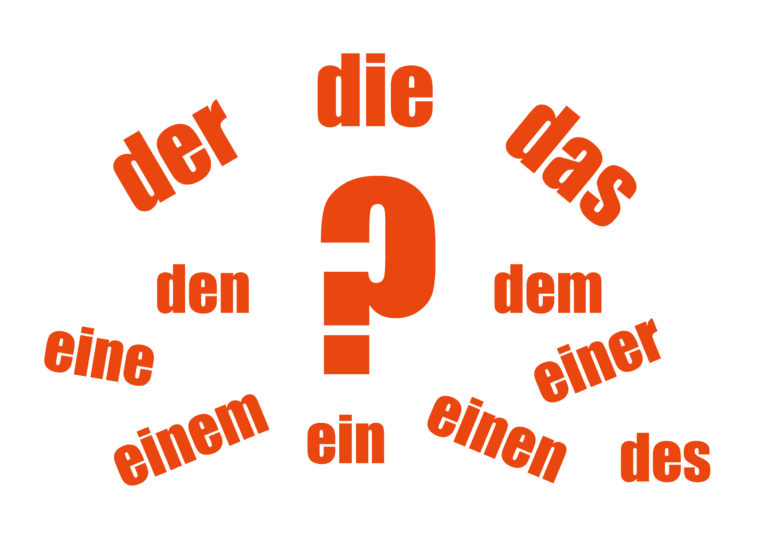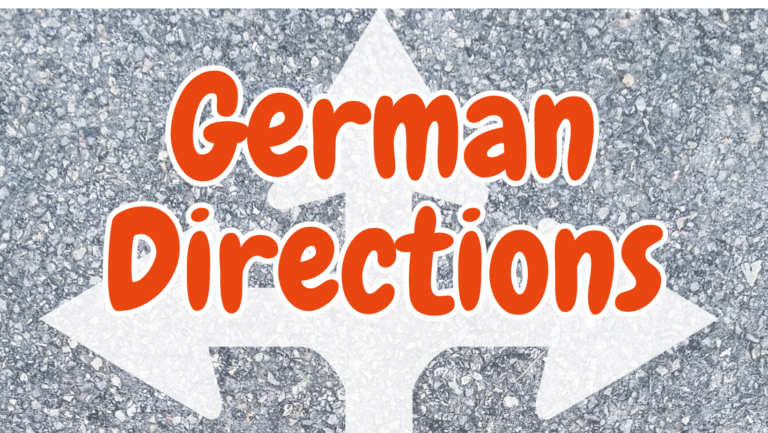
Learning the numbers in German is a fun and easy topic to start your language learning journey on the right foot. Once you understand how to use the numbers in German, you can talk about prices, dates, times, fractions, and more in daily conversations, which is why learning them is so important.
Did you know that to call a German number from abroad, you need to dial the country code +49?
Although you might think German numbers are challenging to learn, you might be surprised. Learning every number starts with 12 easy words, many of which are like their English counterparts. After you learn the numbers one through twelve, learning the rest is a matter of applying straightforward patterns and rules.
Get your free PDF download with German Numbers Flashcards to help you practice the German numbers below.
Table of Contents
- How Numbers Are Similar In German and English
- How Numbers Are Different In German and English
- The Cardinal Numbers in German
- Ordinal Numbers In German
- Numbers in German Fractions
- Telling Time in German
How Numbers Are Similar In German and English
Before diving in, it’s worth noting a few significant differences between counting in German and counting in English. Like English, the first twelve numbers in German are unique, while the teens and multiples of ten take specific endings and variations of the root word.
- Single-digit numbers are unique in both German and English
- English uses the ending -teen and German uses –zehn for the numbers 13 to 19
- English uses the ending -ty, and German uses –zig/ßig for the multiples of ten (20, 30, 40, 50, 60, etc.)
You’ll also notice that some German numbers sound like their English counterparts. Overall, German numbers are easy to learn once you break them down into their patterns.
How Numbers Are Different In German and English
One significant difference between German and English numbers involves the use of periods and commas. Germans use commas and periods oppositely of how we use them in English.
For example, when you write a number in the thousands, use periods instead of commas. Instead of using a decimal point (Punkt) for cents or percentages, use a comma (Komma).
English: 1,000,000.99
German: 1.000.000,99
You’ll notice this difference in German price tags and when you go shopping.
Another difference you’ll notice is in the pronunciation of the numbers 21 and over. In English, we say the multiple of ten first, before the single-digit number.
In Germany, the opposite is the case. For example, 23 in English is written as twenty-three. In German, you would say dreiundzwanzig, or “three and twenty.”
The Cardinal Numbers in German
Cardinal number is a fancy expression for ordinary numbers as you would count them. In contrast to ordinal numbers like first, second and third, or fractions like one-half, cardinal numbers are words like one, two, three, and four.
In German, a number is called eine Nummer or eine Zahl.
Learning the numbers in German is relatively simple. By memorizing the numbers zero to twelve alone with a few rules, you can master German number vocabulary with minimal effort. In everyday life, prices, times, measurements come up in conversations frequently, which is why they’re so essential to learn. So, let’s get started!
Every Number in German From 1 To 1 Trillion
This German numbers list can help you remember vocabulary and serve as a reference point whenever you forget. Below, you’ll find rules to help you with the digits in between.
| 1 | eins | 9 | neun | 17 | Siebzehn | 70 | siebzig |
| 2 | zwei | 10 | zehn | 18 | achtzehn | 80 | achtzig |
| 3 | drei | 11 | elf | 19 | neunzehn | 90 | neunzig |
| 4 | vier | 12 | zwȍlf | 20 | zwanzig | 100 | hundert |
| 5 | fȕnf | 13 | dreizehn | 30 | dreißig | 1,000 | tausend |
| 6 | sechs | 14 | vierzehn | 40 | vierzig | 1 million | million |
| 7 | sieben | 15 | fȕnfzehn | 50 | fȕnfzig | 1 billion | milliarde |
| 8 | acht | 16 | sechzehn | 60 | sechzig | 1 trillion | billion |
In German, the number ‘zero’ is called null. Let’s look at the basic rules for learning and pronouncing German numbers.
- The German numbers from zero to twelve have unique names.
- Pronounce German numbers in the teens by saying the second number first, then adding ‘zehn.’ This pronunciation takes time to get used to because it’s the opposite in English.
Example: drei-zehn = three + ten = 13
- For German numbers in multiples of ten except 30, you also say the second number first, but add ‘zig’ to the multiple. The number 30 is formed by adding –ßig to drei.
Example: drei-ßig (30), vier-zig (40), fȕnf-zig (50)
- Join units and multiples of ten with ‘und’ as a single word
Example: einunddreißig = 31, zweiunddreißig = 32, dreiunddreißig = 33
- Pronounce multiples of 100 at the beginning of a number
Example: dreihunderteinundzwanzig = 323, vierhundertsechsundneunzig = 496
- Say the years in German in tens of thousands
Example: neunzehnhundertvierundachtzig = 1984
- When one comes after a number, leave the -s. When one comes in the middle, the -s is typically dropped.
Example: hunderteins
In German, one quadrillion is Billiarde, one quintillion is Trillion, and a sextillion is Trilliarde.
Counting in German From 0 To 12
The numbers zero to twelve are unique in German and most critical when learning how to count. Most other number combinations will use a form of these words.
- 0 – null
- 1 – eins
- 2 – zwei
- 3 – drei
- 4 – vier
- 5 – fȕnf
- 6 – sechs
- 7 – sieben
- 8 – acht
- 9 – neun
- 10 – zehn
- 11 – elf
- 12 – zwȍlf
Many of these numbers sound similar in German and English, making them easier to remember. Once you’ve memorized these 12 words, you can create any German number simply by following the rules. From here on out, learning the other numbers will feel like a breeze.
The Numbers in German From 13 To 19
Making the numbers 13 to 19 in German is simple. The first number you pronounce is the three to nine, followed by a –zehn ending.
- 13 – dreizehn
- 14 – vierzehn
- 15 – fȕnfzehn
- 16 – sechzehn
- 17 – siebzehn
- 18 – achtzehn
- 19 – neunzehn
Note that 16 (sechzehn) and 17 (siebzehn) lose their –s and –en endings respectively. But there’s another way you can think about counting in the teens in German. Only use the first four letters of the stem number to create the numbers 13 to 19.
Multiples of 10 In German (20 to 90)
When you count multiples of ten in German, like 20, 30, 40, 50, etc., you also use the first four letters of the stem number. This time, we’ll use the ending –ßig for thirty and –zig for the other multiples of ten.
- 30 – dreißig
- 40 – vierzig
- 50 – fȕnfzig
- 60 – sechzig
- 70 – siebzig
- 80 – achtzig
- 90 – neunzig
Seems straightforward so far, right? If you want to add single digits after the tens digits, you’ll notice an enormous difference in pronunciation.
German Numbers With Single Digits and Multiples of Ten
In contrast to English, Germans say the single-digit first, then ‘und,’ then the tens digit.
- 34 – vierunddreißig
- 41 – einundvierzig
- 52 – zweiundfȕnfzig
- 66 – sechsundsechzig
- 77 – siebenundsiebzig
- 88 – achtundachtzig
- 99 – neunundneunzig
The pattern applies to every number in German up to 99.
The Numbers in German From 100 to 9,999 (And Beyond)
Counting in multiples of 100 in German is as easy as adding the single-digit number to –hundert. For the number 100, drop the final –s on ‘eins.’
- 100 – einhundert
- 200 – zweihundert
- 300 – dreihundert
- 400 – vierhundert
- 500 – fȕnfhundert
- 600 – sechshundert
- 700 – siebenhundert
- 800 – achthundert
- 900 – neunhundert
- 1.000 – eintausend
Now, you’re ready to put everything you’ve learned together into some impressively long word strings! Let’s add some multiples of ten and single digits to the numbers above.
111 – einhundertelf or hundertelf
285 – zweihundertfȕnfundachtzig
567 – fȕnfhundertsiebenundsechzig
9.999 – neuntausendneunhundertneunundneunzig
458.897 – vierhundertachtundfȕnfzigtausendachthundertsiebenundneunzig
As you can see, the German numbers can become ridiculously long when you write them as words.
Ordinal Numbers In German
Numbers like first, second, third, and fourth are called ordinal numbers. Let’s look at the ordinal numbers in German in their simplest forms.
- 1st – erste
- 2nd – zweite
- 3rd – dritte
- 4th – vierte
- 5th – fünfte
- 6th – sechste
- 7th – siebte
- 8th – achte
- 9th – neunte
- 10th – zehnte
Notice that every ordinal number in German follows a simple pattern with a –te end. Only erste and dritte are spelled differently than the cardinal forms.
When you use German ordinal numbers in a sentence, you’ll need to pick an appropriate adjective ending.
Example: Wir haben sie das erste mal gesehen. (We saw her the first time.)
Example: Ich sitze am ersten Tisch. (I’m sitting at the first table.)
Example: Unser erstes Zuhause war klein. (Our first home was small.)
Depending on the gender, case, and number of the noun, you’ll need to tap into your knowledge of the German Cases to get the ending right.
Calendar Dates in German
Ordinal numbers are helpful when talking about dates and setting appointments in German. Without a deep discussion about the adjective endings, here are some quick ways to start talking about calendar dates in German.
Example: Heute ist der einundzwanzigste November (Today is the 21st of November.)
Example: Wir haben die dritte Woche in November. (It’s the third week in November.)
Let’s look at ways to talk about Jahrzehnte (decades) and Jahrhunderte (centuries) in German.
Example: das neunzehnte Jahrhundert (the 19th century), das zwanzigste Jahrhundert (the 20th century), das einundzwanzigste Jahrhundert (the 21st century)
You can express some decades as nouns in German.
Example: die Siebziger (the 70s), die Achtziger (the 80s), die Neunziger (the 90s)
Numbers in German Fractions
When you want to talk about a fraction in German, use the ending –tel.
- Half – die Hälfte
- Third – das Drittel
- Fourth – das Viertel
- Fifth – das Fünftel
- Sixth – das Sechstel
- Seventh – das Siebtel
- Eith – das Achtel
- Ninth – das Neuntel
- Tenth – das Zehntel
Note that half and third are irregular, but the rest of the numbers follow the same pattern.
Example: Wir haben die Hälfte gegessen. (We ate half.)
Telling Time in German
Typically, Germans tell time using a 24-hour clock. That means you’re more likely to hear someone say 13 o-clock than one o-clock. Some Germans use a 12-hour system when speaking. You can indicate the time of day with morgens (mornings), mittags (early afternoon), nachmittags (late afternoon), abends (evening), and nachts (night).
Example: Es ist vierzehn Uhr. (It is 2 pm or 14 o’clock.)
Example: Ich schlafe um Mitternacht. (I sleep at midnight.)
Example: Sie arbeitet um acht Uhr. (She works at 8 am.)
Speaking about a half-hour in German is different than in English. Instead of talking about half-past the hours, Germans tell time halfway before the hour.
Example: Es ist halb acht. (It’s 7.30.)
Native speakers don’t say ‘halb neunzehn,’ so you can also tell the time in German using the following alternative that highlights the time of day.
Example: Es ist neunzehn Uhr dreißig. (It’s 7.30 pm.)
There are two ways to tell the time BEFORE the hour and after the hour.
Example: Es ist viertel vor sieben. (It’s a quarter to 7.)
Example: Es ist dreiviertel sieben. (It’s a quarter to 7.)
Talking about the time AFTER the hour is slightly different.
Example: Es ist viertel nach sieben. (It’s a quarter after 7.)
Example: Es ist viertel acht. (It’s a quarter after 7.)
These terms can be confusing because dreiviertel sieben means it’s 6:45, and viertel acht means it’s 7:15, depending on the region in Germany.
Final Thoughts
When you learn the numbers in German, I recommend starting with the numbers one through twelve first. Memorize these unique digits before putting everything together in combinations.
Then, you can focus on recognizing the patterns and learning the rules for saying the larger numbers. Remember to repeat this lesson on another day when you’re ready to refresh your memory.




